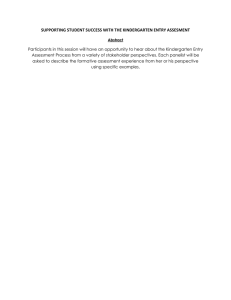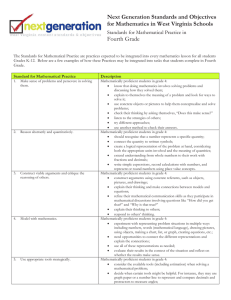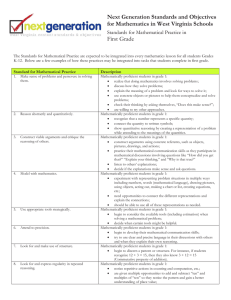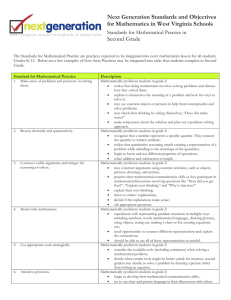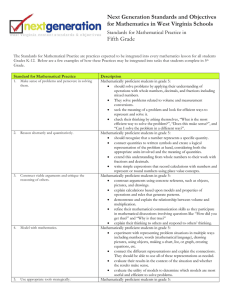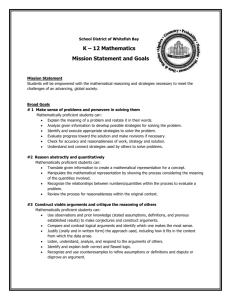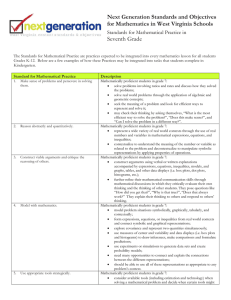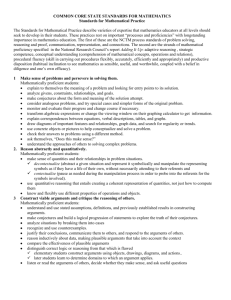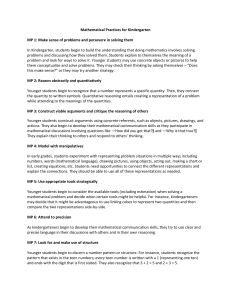Next Generation Standards and Objectives for Mathematics in West Virginia Schools Kindergarten
advertisement
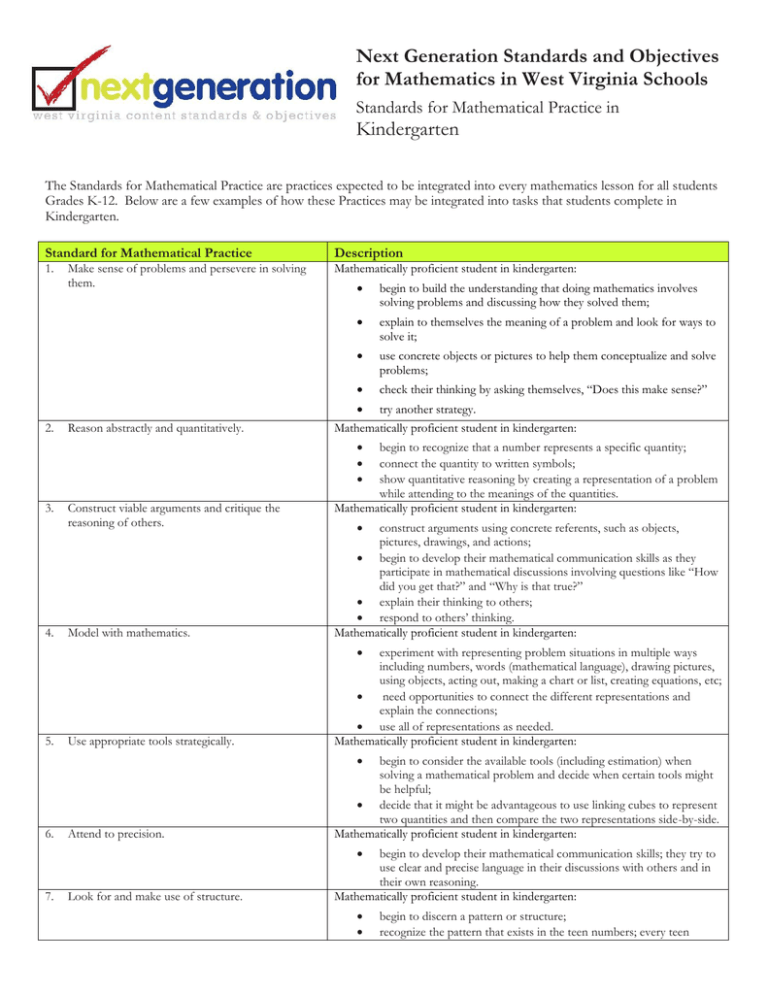
Next Generation Standards and Objectives for Mathematics in West Virginia Schools Standards for Mathematical Practice in Kindergarten The Standards for Mathematical Practice are practices expected to be integrated into every mathematics lesson for all students Grades K-12. Below are a few examples of how these Practices may be integrated into tasks that students complete in Kindergarten. Standard for Mathematical Practice Description 1. Mathematically proficient student in kindergarten: 2. Make sense of problems and persevere in solving them. Reason abstractly and quantitatively. begin to build the understanding that doing mathematics involves solving problems and discussing how they solved them; explain to themselves the meaning of a problem and look for ways to solve it; use concrete objects or pictures to help them conceptualize and solve problems; check their thinking by asking themselves, “Does this make sense?” try another strategy. Mathematically proficient student in kindergarten: 3. 4. Construct viable arguments and critique the reasoning of others. Model with mathematics. begin to recognize that a number represents a specific quantity; connect the quantity to written symbols; show quantitative reasoning by creating a representation of a problem while attending to the meanings of the quantities. Mathematically proficient student in kindergarten: construct arguments using concrete referents, such as objects, pictures, drawings, and actions; begin to develop their mathematical communication skills as they participate in mathematical discussions involving questions like “How did you get that?” and “Why is that true?” explain their thinking to others; respond to others’ thinking. Mathematically proficient student in kindergarten: 5. Use appropriate tools strategically. experiment with representing problem situations in multiple ways including numbers, words (mathematical language), drawing pictures, using objects, acting out, making a chart or list, creating equations, etc; need opportunities to connect the different representations and explain the connections; use all of representations as needed. Mathematically proficient student in kindergarten: 6. Attend to precision. begin to consider the available tools (including estimation) when solving a mathematical problem and decide when certain tools might be helpful; decide that it might be advantageous to use linking cubes to represent two quantities and then compare the two representations side-by-side. Mathematically proficient student in kindergarten: 7. Look for and make use of structure. begin to develop their mathematical communication skills; they try to use clear and precise language in their discussions with others and in their own reasoning. Mathematically proficient student in kindergarten: begin to discern a pattern or structure; recognize the pattern that exists in the teen numbers; every teen 8. Look for and express regularity in repeated reasoning. number is written with a 1 (representing one ten) and ends with the digit that is first stated; recognize that 3 + 2 = 5 and 2 + 3 = 5. Mathematically proficient student in kindergarten: notice repetitive actions in counting and computation, etc. notice that the next number in a counting sequence is one more. recognize when counting by tens, the next number in the sequence is “ten more” (or one more group of ten). continually check their work by asking themselves, “Does this make sense?”

